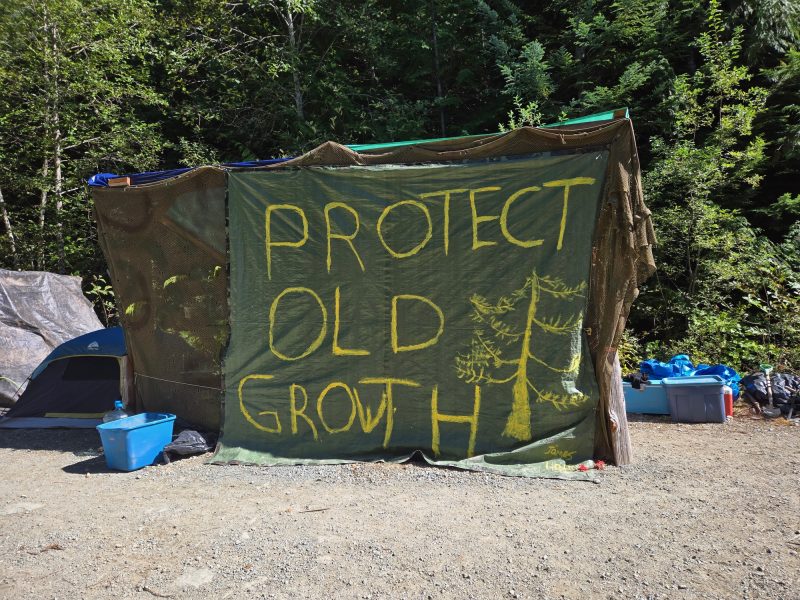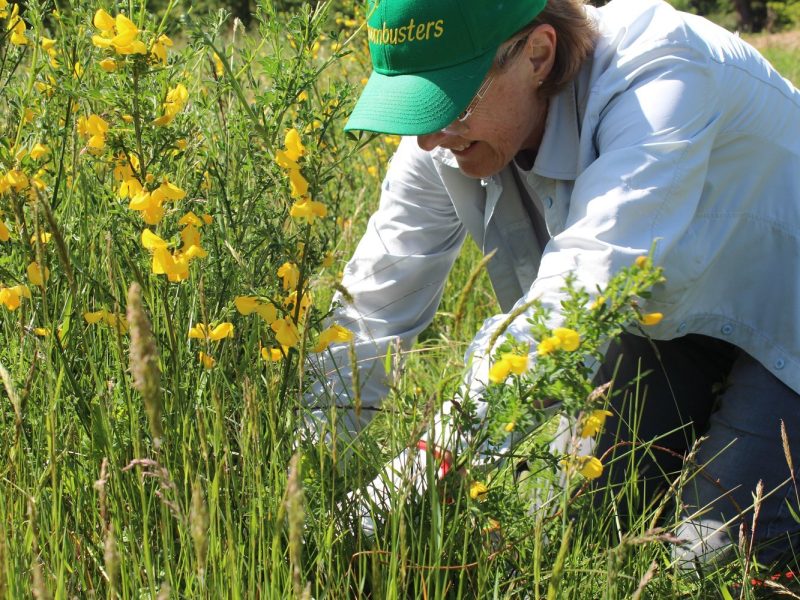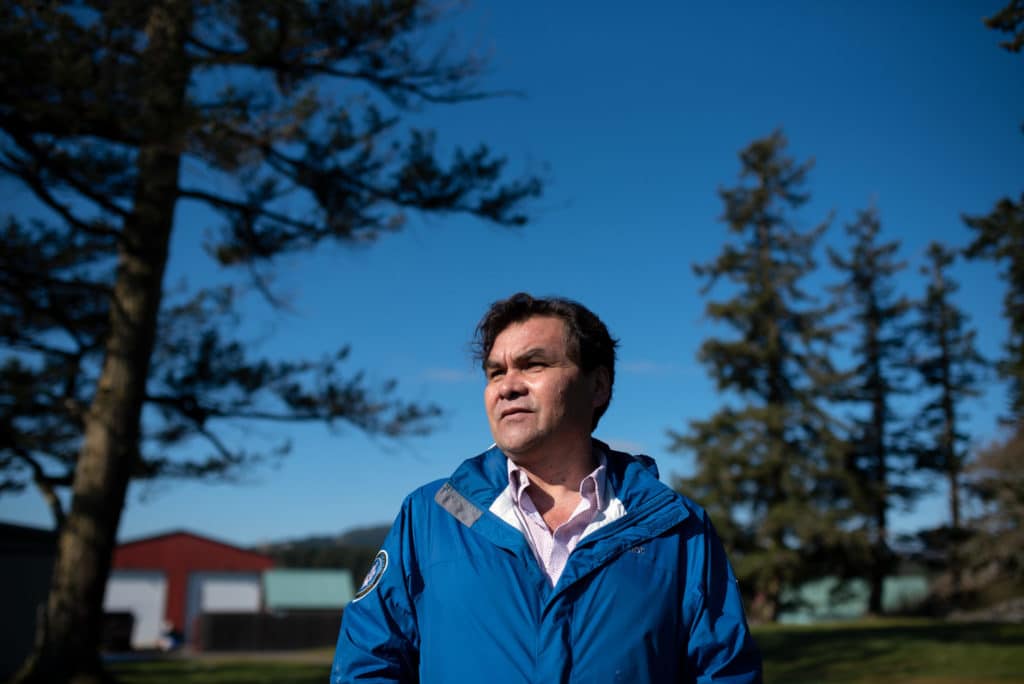
At the end of February, members from SC’IA⁄NEW First Nation, the District of Metchosin, Habitat Acquisition Trust and Pearson College UWC gathered to celebrate an historic agreement honouring Indigenous-led conservation and friendship.
Dozens came together on the territory of SC’IA⁄NEW First Nation — behind Metchosin’s district offices — to uplift the learnings, relationships and knowledge that led to this moment. After three years of work, the groups were finally able to announce their intent to create an Indigenous Protected and Conserved Area (IPCA) on the lands now known as Mary Hill.
Lands and waters that are part of an IPCA are under the protection and stewardship of Indigenous governments and are managed through Indigenous law, governance and knowledge systems.
Currently, the Mary Hill land is held by the federal government under the Department of National Defence. Public access to Mary Hill has been prohibited since the Second World War, but that is expected to change as treaty negotiations between SC’IA⁄NEW First Nation and the Crown continue.
The 136-hectare land parcel is at the tip of Southern Vancouver Island, flanked by Pedder Bay on one side and the Salish Sea on the other. Pearson College UWC, Weir Beach and William Head Institution are all adjacent to the lands. It is also part of the rare coastal Douglas fir ecosystem and is home to species-at-risk and old growth trees.
SC’IA⁄NEW First Nation (Beecher Bay) and supporters of this project have signed a standstill agreement so that no other land-use options will be entertained for this area, which sits at the heart of SC’IA⁄NEW First Nation’s ancestral territory.
“The most endangered species I think that was at Mary Hill is the Beecher Bay people themselves,” SC’IA⁄NEW First Nation Chief Russ Chipps said at the announcement. “We haven’t been there for years, we haven’t set foot on the land, and just recently I set foot on the land with my uncle. It’s discouraging that it happened to us but it’s ok that we’re bringing this warm feeling back.”
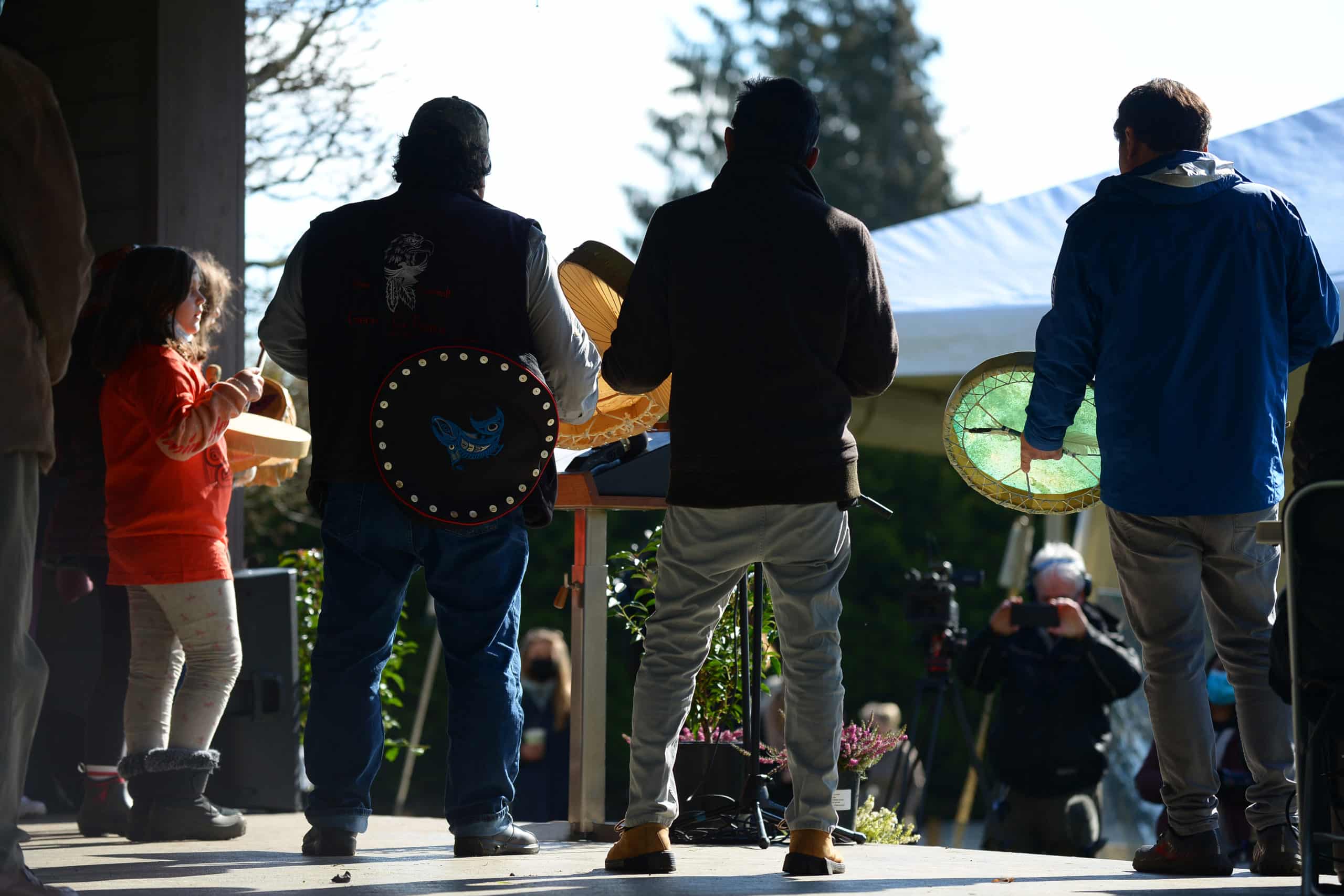
A way forward for Mary Hill
The Mary Hill land is under the ownership of the Department of National Defence but has now been declared surplus to the department’s needs. Within SC’IA⁄NEW territory, Mary Hill is the only suitable Crown land available for treaty negotiations.
The Te’mexw Treaty Association — made up of five Coast Salish nations including SC’IA⁄NEW Nation — has been working to negotiate modern treaties within the B.C. Treaty Process. Part of these negotiations includes the Mary Hill lands, according to a news release.
Erin Thomson-Leach, a lawyer working on behalf of SC’IA⁄NEW First Nation, says it is expected that the Crown will offer the Mary Hill property as part of a treaty. At the event, she noted that nothing has been finalised yet and negotiations are ongoing.
Since the Second World War and up until recently, no one from SC’IA⁄NEW First Nation or the Metchosin community has been permitted to access the Mary Hill lands. Now, Thomson-Leach says SC’IA⁄NEW Nation is planning for the future use of the land in anticipation of successful treaty negotiations.
Two main land-use options are being explored by the Nation, Thomson-Leach says, both of which would require engagement and consent from the SC’IA⁄NEW First Nation community. The first option is real estate development that would generate revenue for the nation, while the second option is to create an Indigenous Protected and Conserved Area (IPCA).
Thomson-Leach says an IPCA would preserve the Mary Hill lands and also enable economic activities — compatible with a protected area — that benefit SC’IA⁄NEW First Nation. The new agreement commits the First Nation to exclusively explore the IPCA option for the next year and a half.
Indigenous-led land protection brings people home
In 2016, Indigenous experts and Knowledge Holders came together and formed the Indigenous Circle of Experts (ICE) to help the Canadian government add to the country’s protected and conserved areas. After two years of consultations — and many years of learnings and knowledge since the time of creation stories — a final report with recommendations called “We Rise Together” was presented.
The Indigenous Circle of Experts specifically chose the term “IPCA” to encompass a variety of Indigenous-led land protection initiatives. The report defines IPCAs as “lands and waters where Indingeous governments have the primary role in protecting and conserving ecosystems through Indigenous laws, governance and knowledge systems.”
“Culture and language are at the heart and soul of an IPCA,” the report futhers.
Related story: What are Indigenous Protected and Conserved Areas?
The form and function of IPCAs can vary but they also share common objectives, the report says. They are led by Indigenous governments, respect protocols and ceremony, support the reawakening of Indigenous languages, promote conservation economies, protect food security and culture and lift up Indigenous rights, responsibilities and knowledge systems. Conservation standards for each IPCA are decided by Indigenous governments.
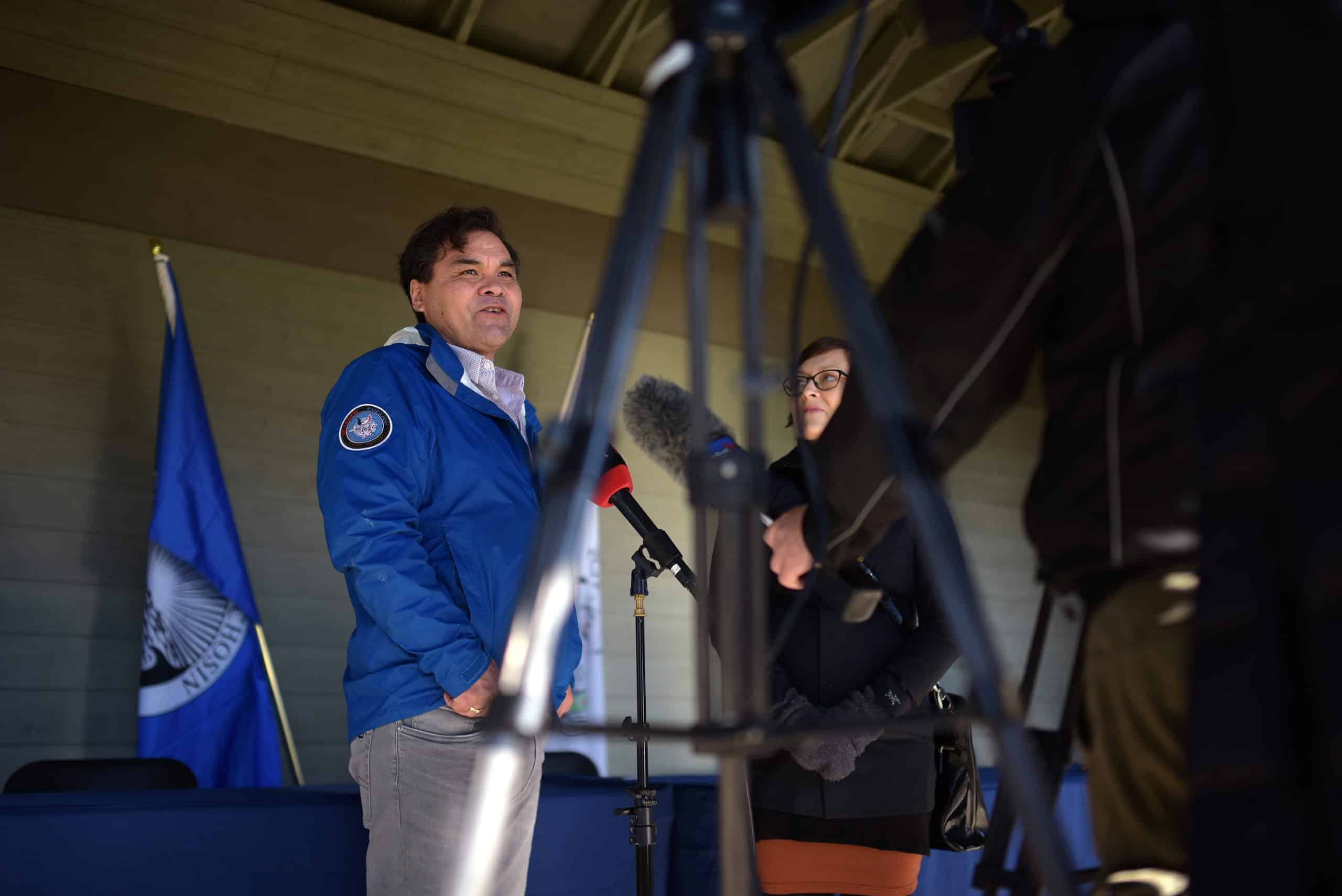
On Vancouver Island, four tribal parks have been declared on Tla-o-qui-aht Territory: Wah-nuh-jus – Hilth-hoo-is (Meares Island), Tranquil Tribal Park, Ha`uukmin (Kennedy Lake Watershed) and Esowista Tribal Park. These are some examples of IPCAs, and others in B.C. include Dasiqox Tribal Park on Tŝilhqot’in territory, and K’ih tsaa?dze Tribal Park in Doig River First Nation on treaty territory.
The key to IPCAs is that they are always Indigenous-led. They are declared and self-determined by Indigenous governments and therefore can be quite nuanced based on different priorities and objectives set by the Indigenous people managing them.
If the Mary Hill project is successful, it will add to a network of already established IPCAs across B.C. and Canada. There are already 52 Indigenous communities that have received funding to plan and establish future IPCAs.
Chipps says the economic and conservation benefits of an IPCA will provide an opportunity for SC’IA⁄NEW First Nation members to return to their territory.
“I’m humbled and it’s hard to speak about what’s going to happen up there. It is turning into a park but on the other hand it’s creating that economic thing that’s going to bring our people home,” Chipps said at the announcement. “We have people out there that have been away from our home for years that have not stepped on Beecher Bay land. We’ve got people that need housing and the economic component of this will bring our people home.”
The education outcome
Pearson College UWC, which is adjacent to the Mary Hill site, is committed to contributing 14 hectares of undeveloped Pearson College-owned land to the proposed IPCA. It is L-shaped, on the north side of campus and includes a section of Pedder Bay as well. The school is part of a network of 18 international schools, the United World Colleges (UWC), that each welcome students from around the world to come learn together. Pearson College has students and alumni from more than 150 different countries.
Craig Davis, president of Pearson College UWC says this is an opportunity for the school to give back “as part of [its] commitment to reconciliation.”
“I know of no other school that has made a similar commitment to give land back to its Indigenous friends and neighbours,” Davis said at the announcement.
In 2020, the school adopted a Reconciliation Action Plan and Indigenous Vision with input from a specially-formed advisory committee, Elders and Chief Chipps from SC’IA⁄NEW First Nation, Indigenous alumni, students, faculty and staff. These documents, which include recommendations for a path forward, represent the first ever comprehensive commitment to reconciliation made by the school.

At the announcement, Davis said the plan and vision help align the college’s values with those of Indigenous students and communities.
“Today, these include our obligation to be prudent guardians of the land and the waters upon which our students from across the globe learn and live,” Davis said. “Ours is a commitment to place-based education, understanding that anyone anywhere has much to learn from the lands they are in and the people who have long lived there.”
In an interview with The Discourse following the announcement, Chipps said he believes the IPCA formed on the Mary Hill lands will be unique because of the educational opportunities presented there.
He says he hopes to see youth from SC’IA⁄NEW First Nation and Pearson College UWC come together and learn from the sea and on the land — whether it be about conservation or learning the Indigenous names for plants. Chipps says there is “no end” to what youth and students can learn from each other on the land.
Related story: Indigenous and Western forest education find harmony at the Wildwood ecoforest
“I just want to get our youth learning and if they can learn a little bit on the land maybe it’s not so far to just step into Pearson College and start going [there],” Chipps said.
He says he envisions a program that could teach youth to be rangers on the Mary Hill land to help in its stewardship and educate others about it.
Davis also announced Pearson College UWC is preparing to introduce a new Climate Action Leadership Diploma Program “infused and led by Indigenous stewardship and knowledge.”
The program will offer university-level courses to students — in partnership with Vancouver Island University and Royal Roads University — that incorporate courses based on Indigenous perspectives of the environment.
A future with Indigenous-led conservation
Habitat Acquisition Trust executive director Katie Blake says the Mary Hill lands have been recognized for their rare ecological value for decades. She says people have been calling for the region’s protection and preservation for just as long.
Blake says Mary Hill is part of the rare Coastal Douglas Fir biogeoclimatic zone and is home to Garry Oak ecosystems, arbutus woodlands and Douglas fir-dominated forests.
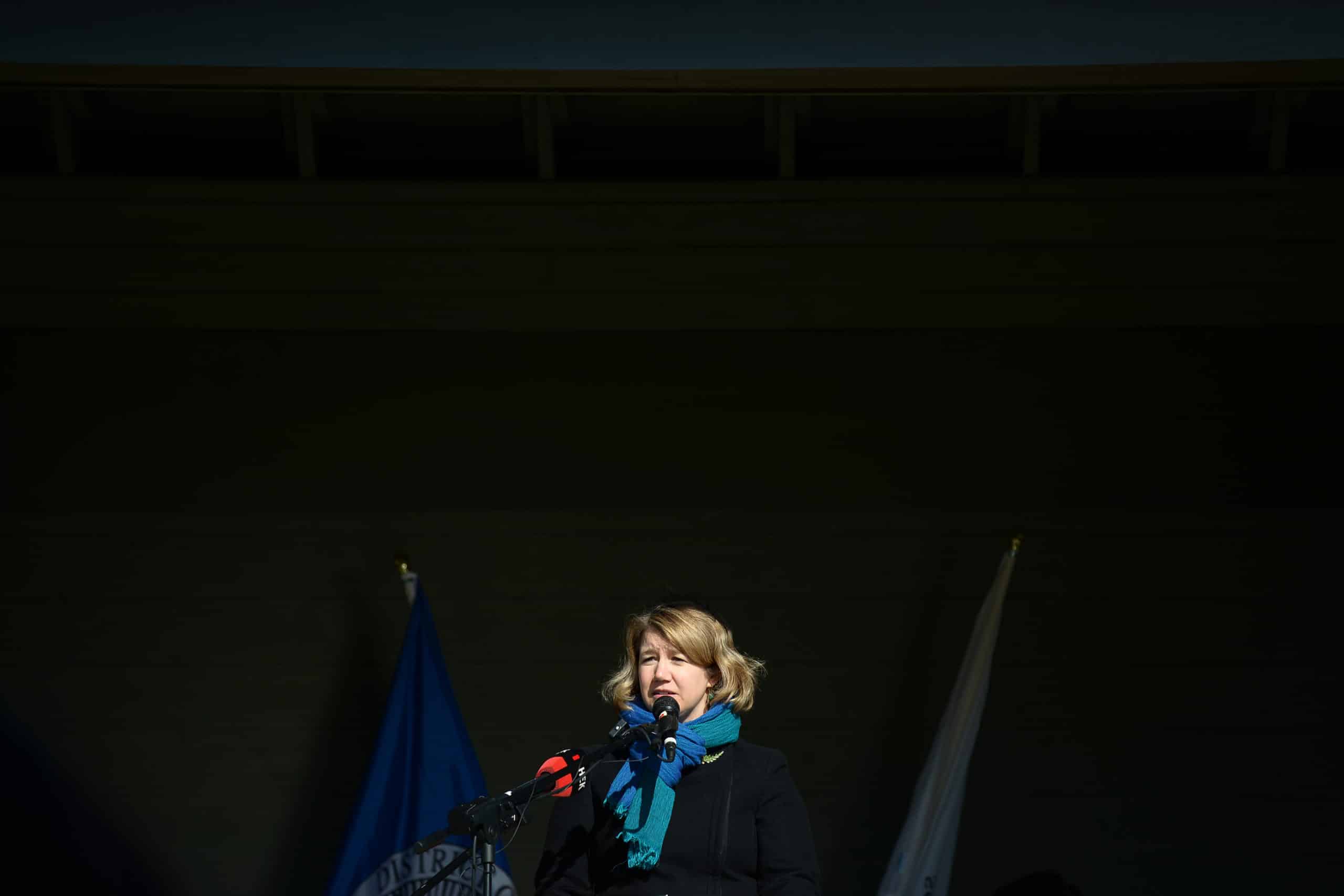
The Coastal Douglas Fir biogeoclimatic zone only exists on a small part of south-eastern Vancouver Island, portions of the Gulf Islands and small areas along the south coast and mainland of B.C. The ecosystems in this zone are at risk as they compete with pressures related to human activity, invasive species and recreational use.
Less than one per cent of the old growth in the Coastal Douglas Fir zone remains and Blake says more than 15 per cent of that small percentage of old growth lies in the proposed IPCA site at Mary Hill.
Related story: To save South Island forests, community support is critical, and not enough
Blake says the IPCA model offers a way to move forward with stewardship and protection that supports both reconciliation and conservation. This, in contrast to a legacy of conservation that has led to the creation of a parks system dominated by settlers.
“While important for preserving space for non-human beings, this system has for the most part excluded worldviews and stewardship practices of Indigenous Peoples,” Blake said at the announcement. “It’s time for those of us in the conservation field to listen to Indigenous leadership.”
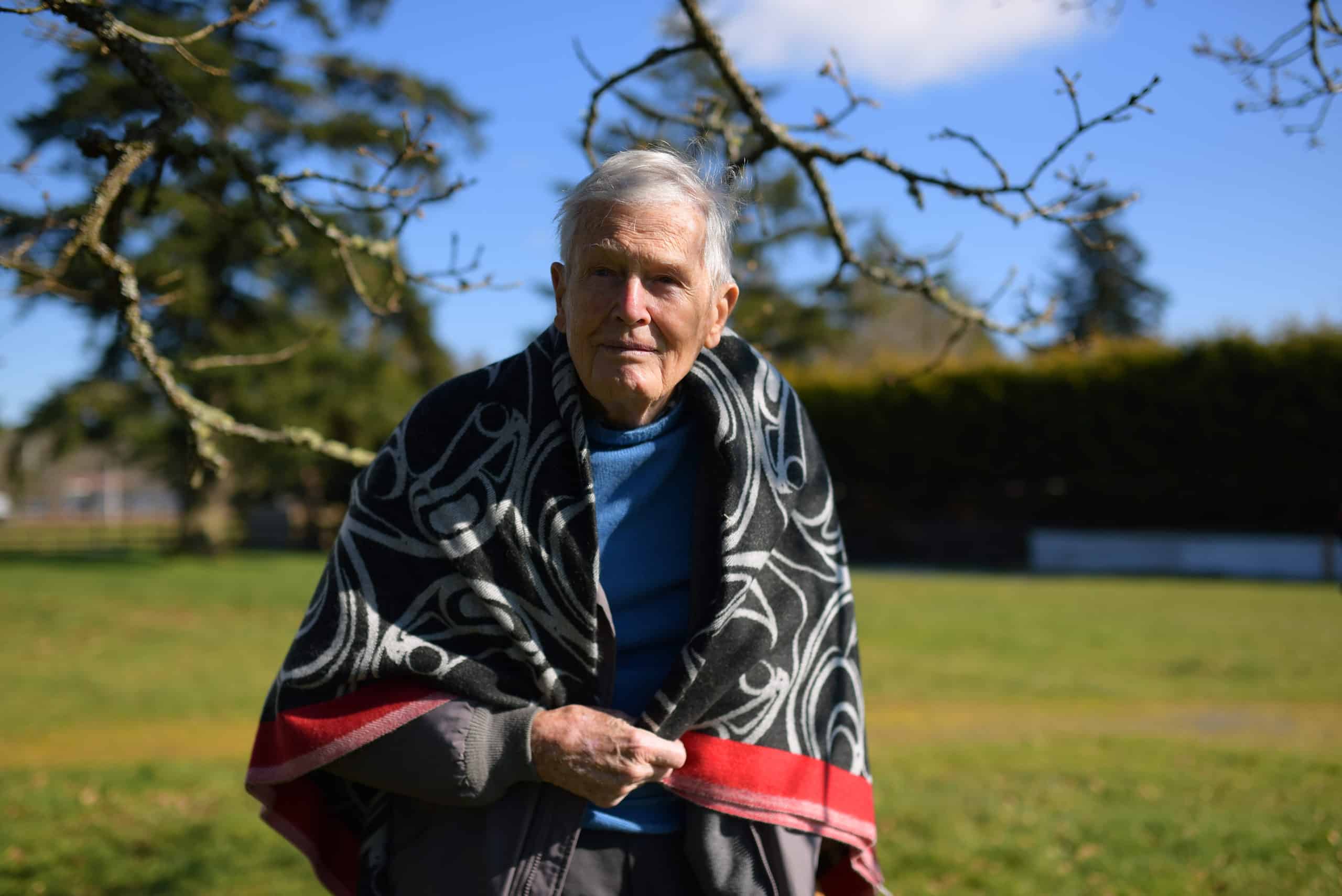
Chief Chipps — the final person to speak at the announcement — said the process leading to this moment has been easy because everyone involved was able to come together and treat each other like human beings.
He thanked Elders for their support and for showing a way to walk forward together as equals. Chipps also said there’s something special about SC’IA⁄NEW First Nation’s working relationship with the Western Communities, rooted in kindness and humanity. He hopes the medicines they have that allow them to treat each other as human beings can spread to others.
“This is a message to the rest of the world that good things are happening out here,” Chipps said. “You don’t need to be a great leader to treat each other like human beings and I find it very easy and that makes me humble.”
Chipps went on to thank the people of SC’IA⁄NEW First Nation for passing knowledge and gifts to him that allow him to treat others as equals. He shared gratitude for being able to extend his hand and invite others to the Mary Hill lands.
At the announcement, Metchosin Mayor John Ranns said he hopes the Mary Hill lands will be preserved for future generations and thinks this will happen because of great “visionaries” like Chief Chipps and the SC’IA⁄NEW Band Council. He says the nation and District of Metchosin have worked together through the years to achieve the impossible.
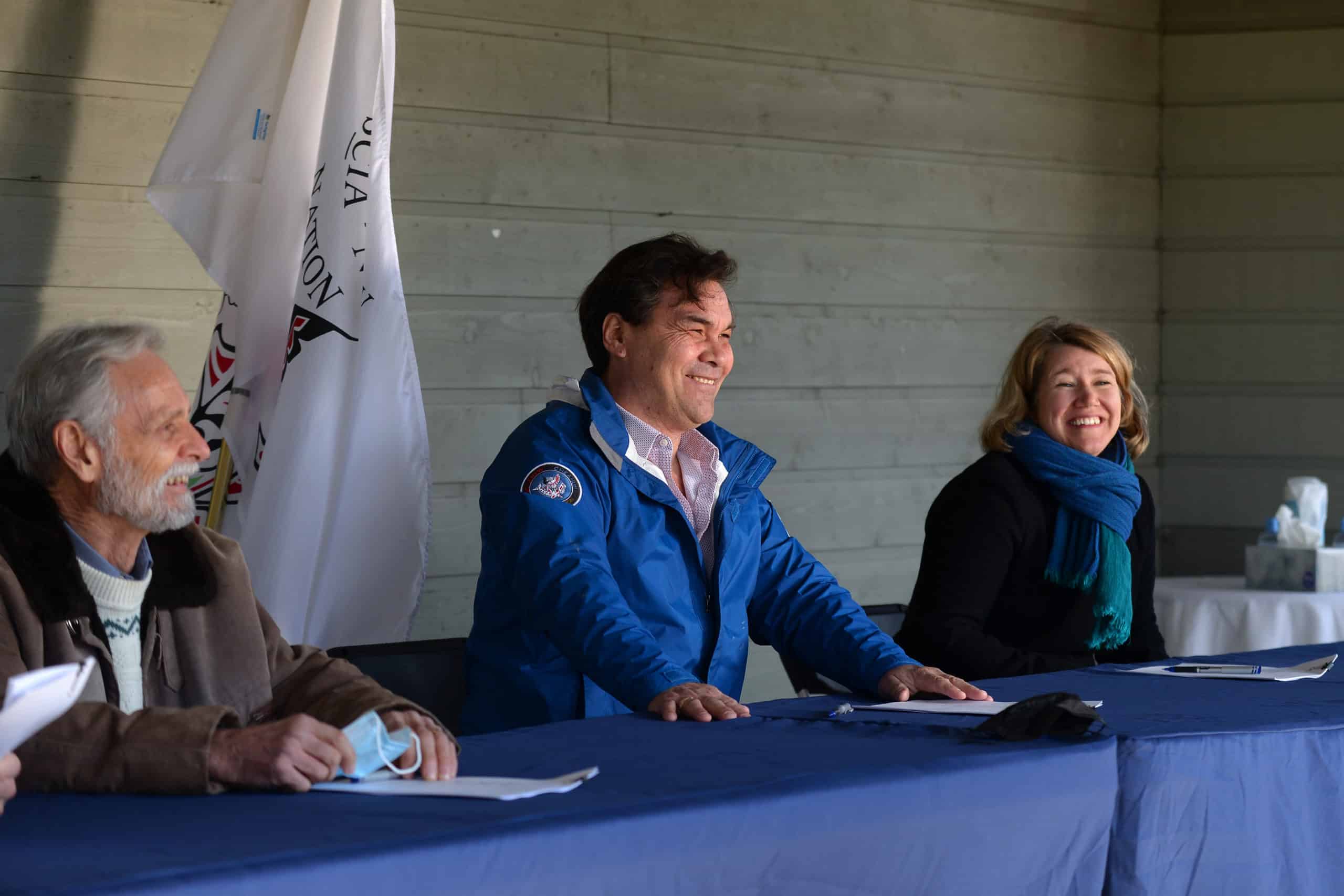
“When you do that it strengthens bonds and friendships,” Ranns said. “When you have relationships like that it opens the doors for even more things … I think that’s the real achievement here. The term reconciliation is used a lot but for me this is what reconciliation really is; working together as friends.”
Next steps for Mary Hill
In a conversation with The Discourse after the announcement, Thomson-Leach said what’s necessary now is for community members to show support for an IPCA outcome at Mary Hill. She says this can be done by reaching out to Habitat Acquisition Trust, the District of Metchosin, SC’IA⁄NEW First Nation and Pearson College UWC to ask how to be involved.
A document from the Te’mexw Treaty Association about the Mary Hill announcement says SC’IA⁄NEW First Nation leadership was engaging with SC’IA⁄NEW members about the proposed IPCA before the COVID-19 pandemic. Now, this process and detailed feasibility work will continue.
While SC’IA⁄NEW First Nation has been considering real estate development on the Mary Hill lands, the standstill agreement signed in February commits the nation to only explore the possibility of an IPCA for the next 18 months.
As that occurs, Habitat Acquisition Trust, the District of Metchosin and Pearson College UWC will fundraise money to compensate SC’IA⁄NEW First Nation for any lost development value if an IPCA is chosen as the best land-use option for Mary Hill.
Thomson-Leach says the standstill agreement “demonstrates authentic friendship and mutual trust between the parties.” And, ultimately, any decisions for Mary Hill will need to meet treaty objectives and receive the consent of SC’IA⁄NEW First Nation to be successful.
“As we’re bringing [our] people home, please accept us and reach out your hand to them and walk with us,” Chipps said as he closed out the announcement. “It’s an easy walk to make as long as we treat each other as simple human beings.” [end]


